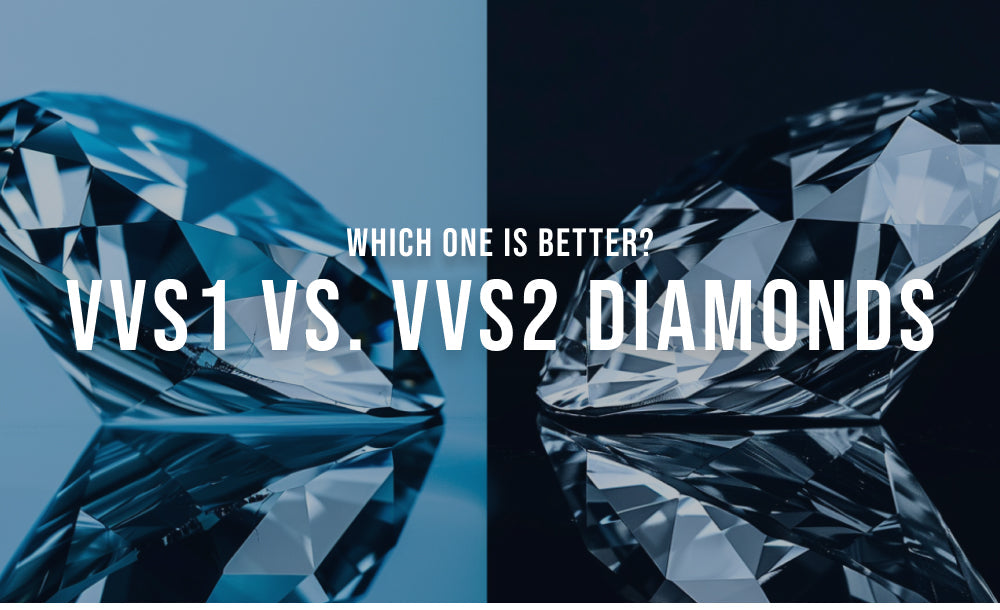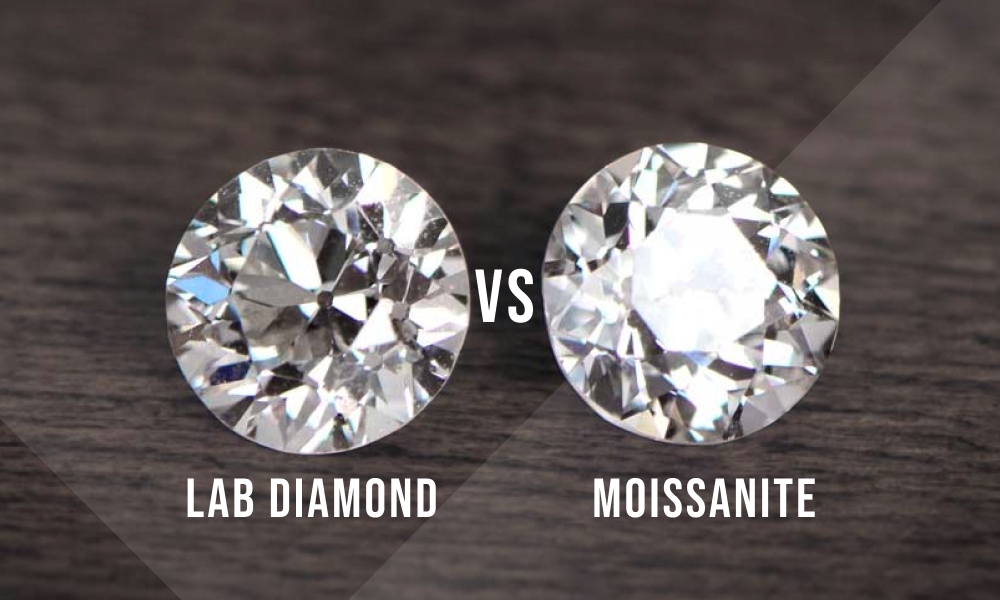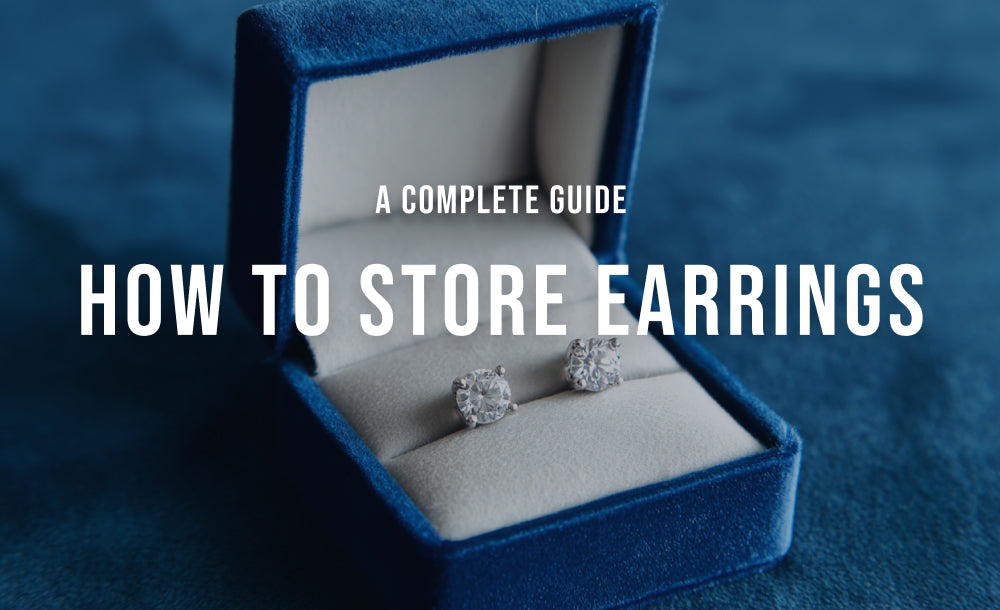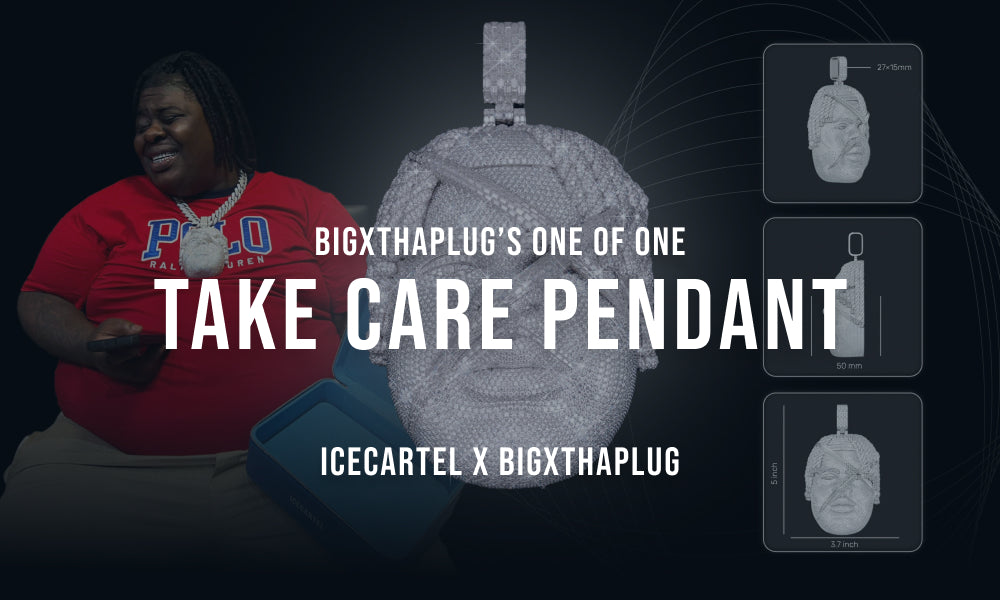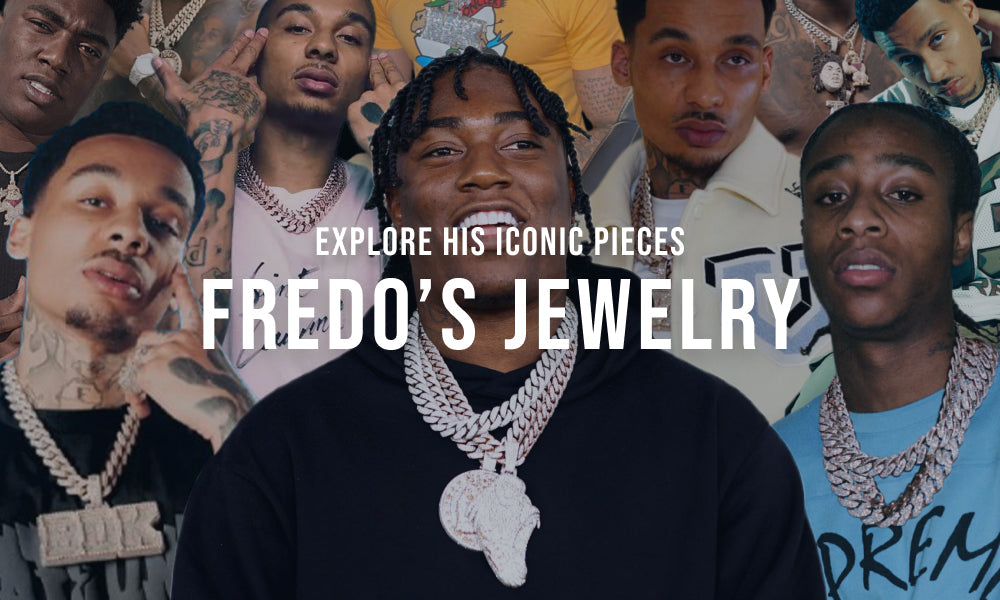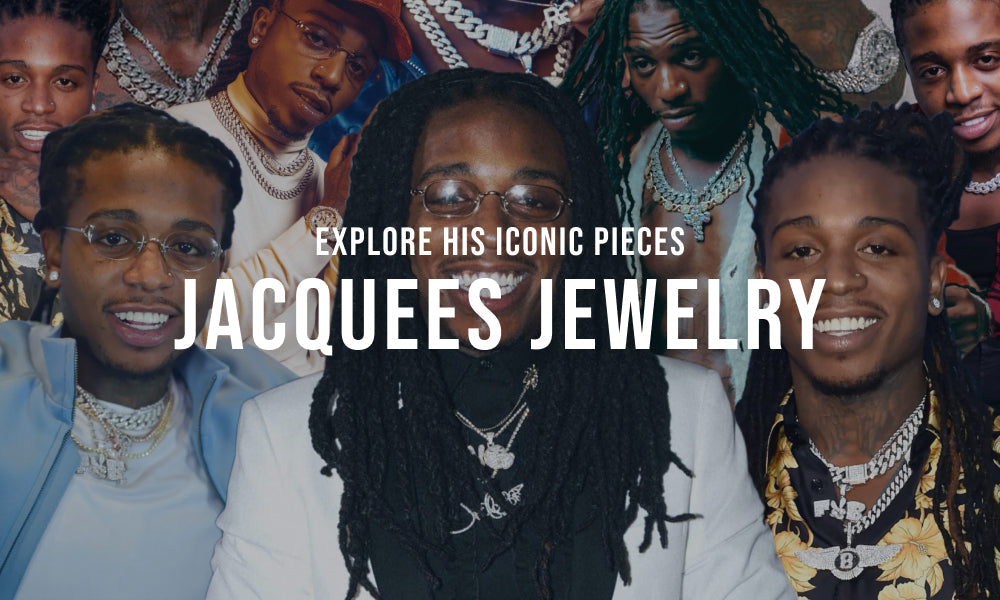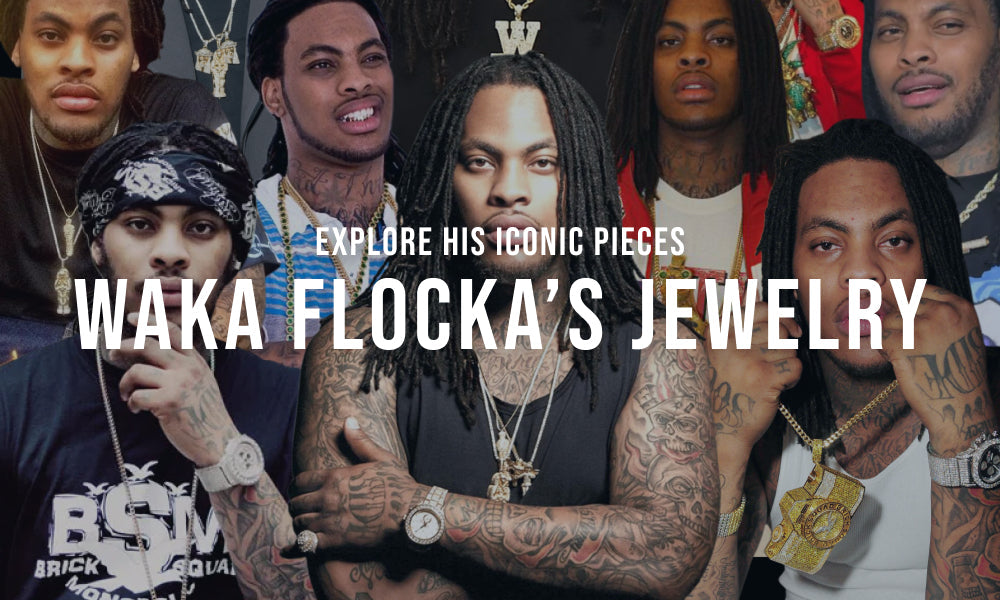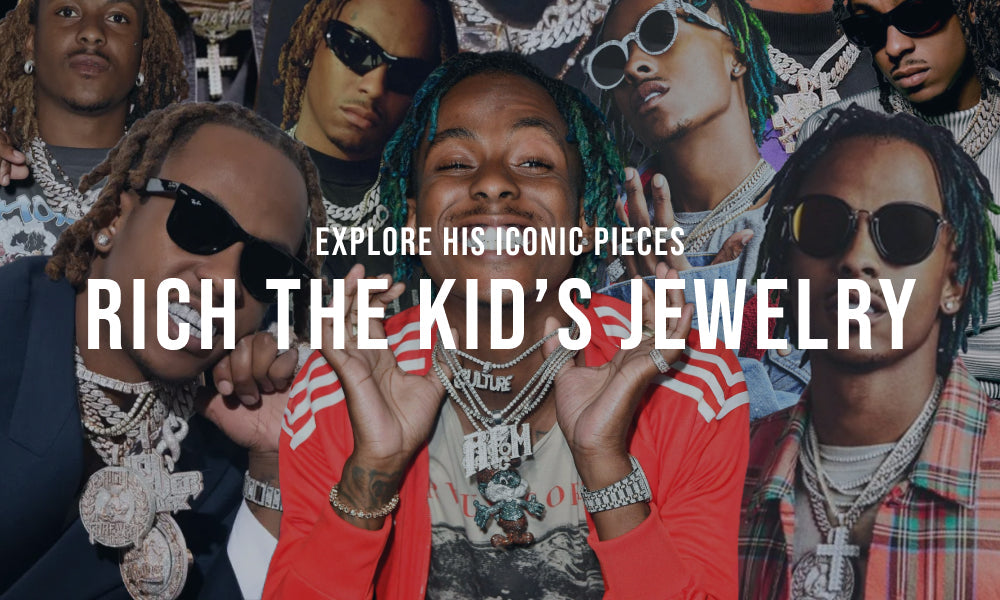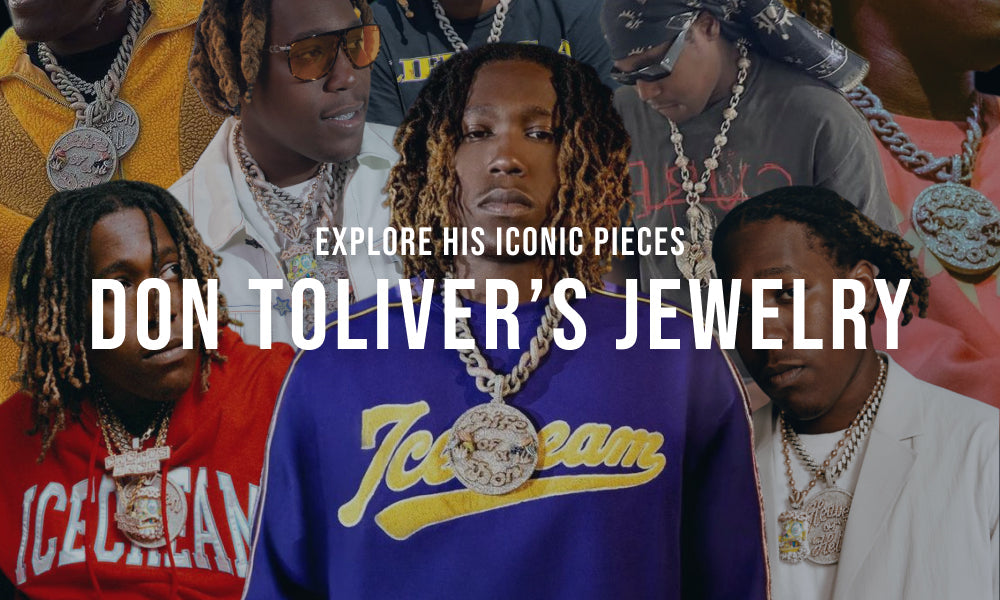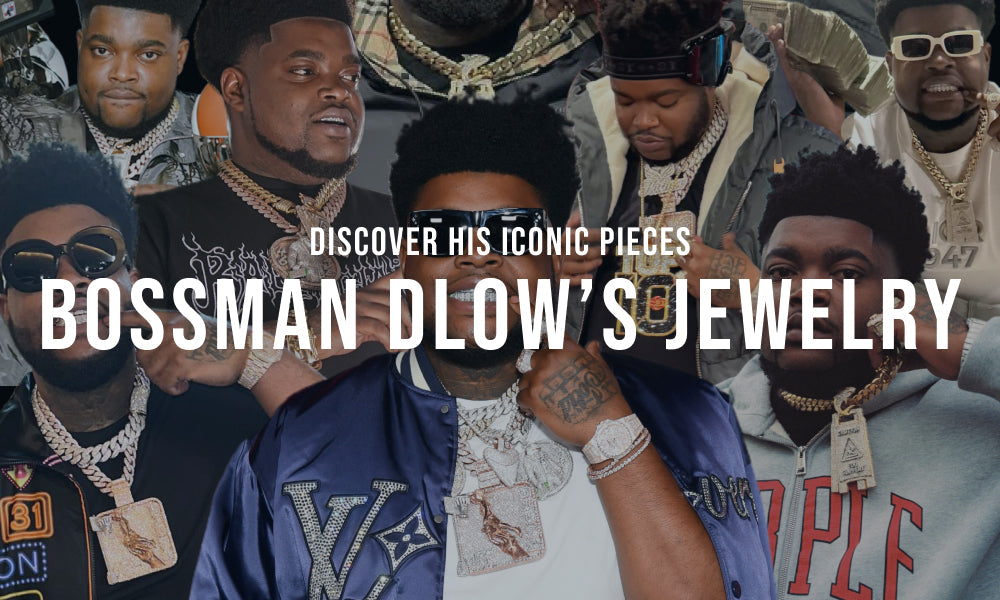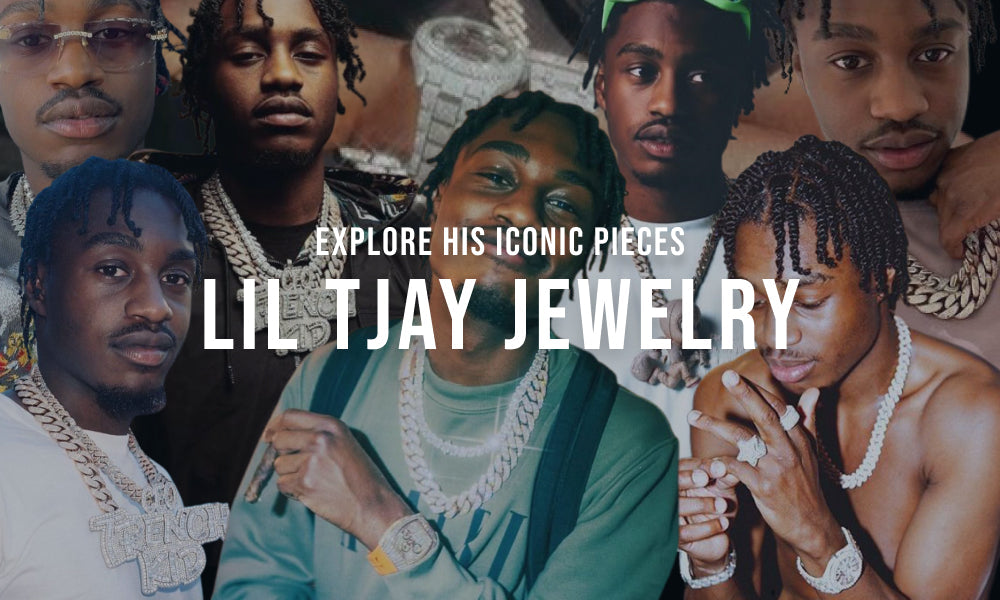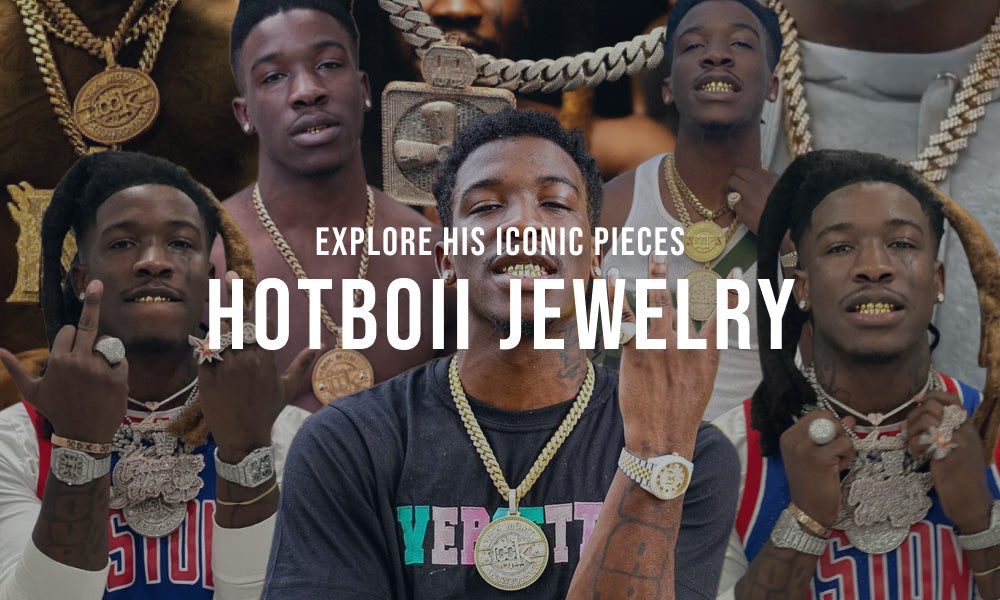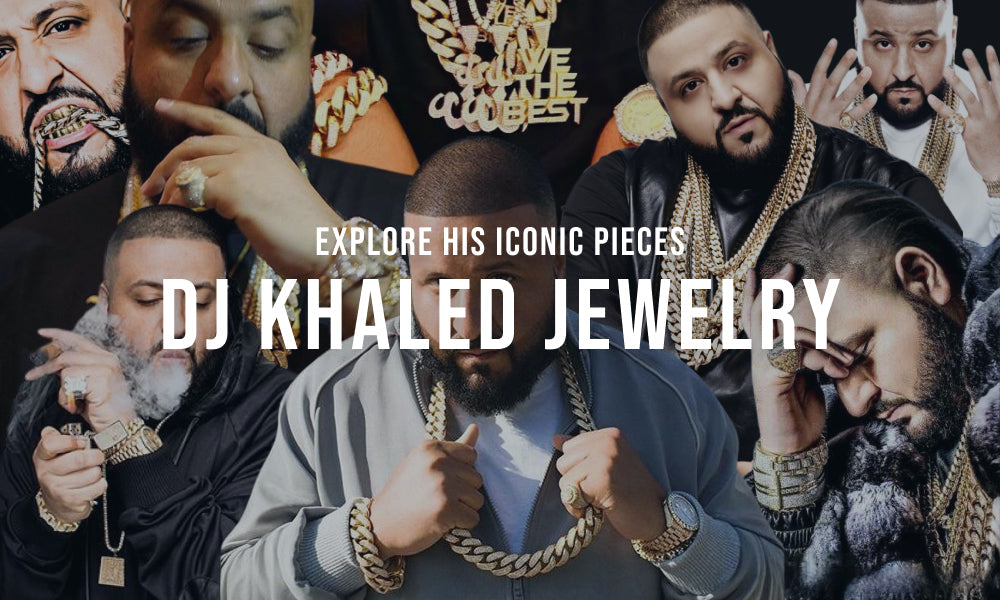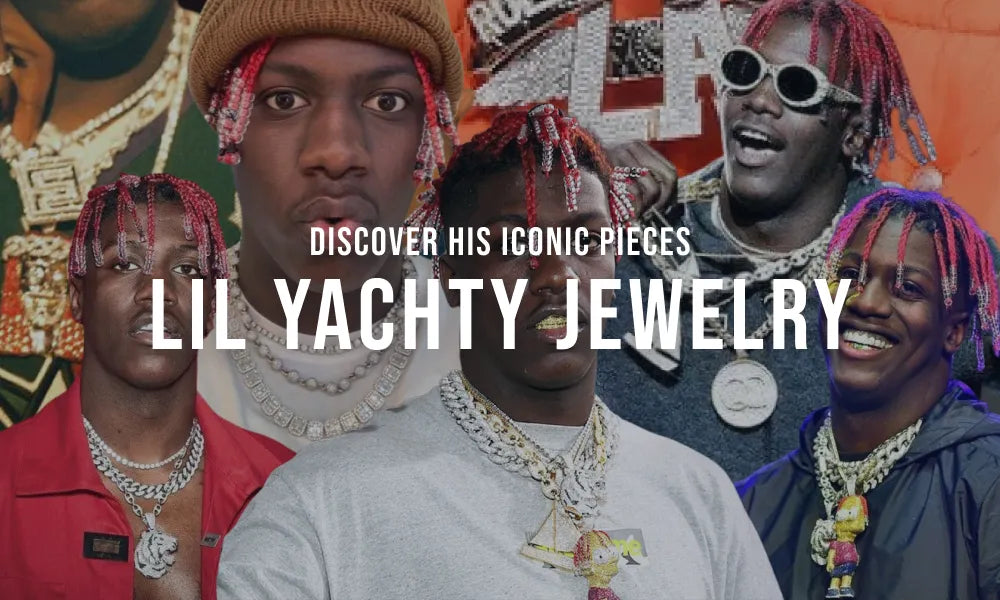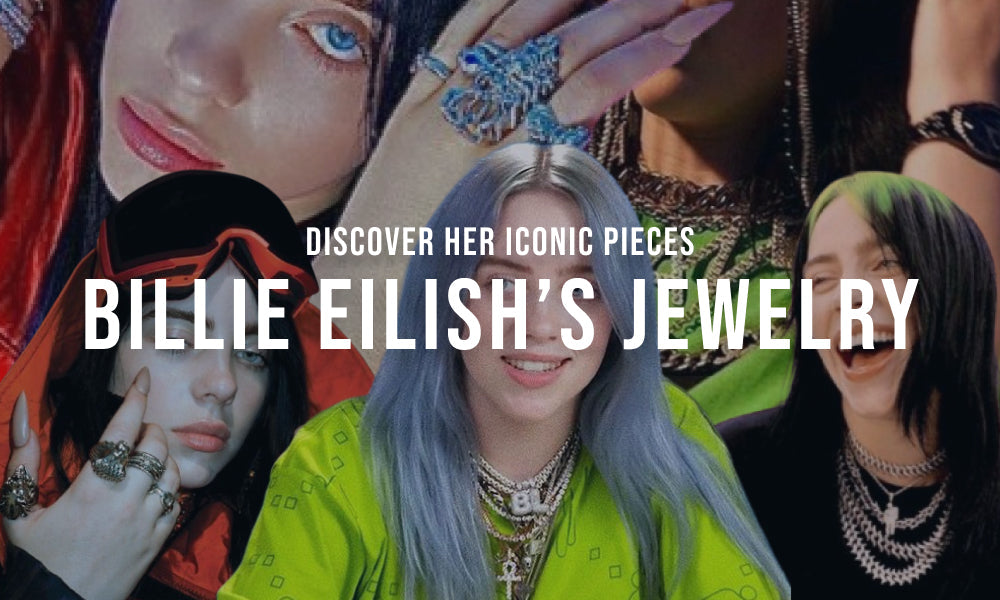Who would say no to a high-clarity diamond with no imperfections? Flawless (FL) and Internally Flawless (IF) diamonds are truly gorgeous, but their value and price correspond to their unparalleled excellence, which not everyone can afford.
If you want to enjoy the beauty of flawless diamonds but at a more affordable price, VVS diamonds might be the answer. But how to choose between VVS1 vs. VVS2? Is VVS1 better than VVS2?
Well, both VVS1 and VVS2 diamonds offer a near-flawless appearance, and the inclusions are quite difficult to see even under magnification. However, VVS2 has slightly more visible inclusions that subsequently determine its value.
The choice between VVS1 and VVS2 diamonds is definitely not an easy one. However, by understanding how diamond clarity works and what distinguishes different clarity grades from each other, you can choose the suitable option based on your preferences and budget. So, if you have trouble choosing between VVS1 and VVS2 diamonds, here’s everything you need to know.
Understanding Diamond Clarity
Understanding how diamonds are graded is crucial for making the right choice between different clarity grades. Here’s how the 4 Cs of diamonds work, and why the diamond clarity scale is so important in determining the gemstone’s overall appearance and value.
The 4Cs of Diamonds
While precious metals are graded based on their purity, natural and lab-grown diamonds are made up of 100% pure elemental carbon. Therefore, GIA has developed a universal diamond grading system that evaluates diamonds based on their 4 key characteristics: color, clarity, carat weight, and cut.
Each of these 4 properties influences the quality and price of diamonds, with clarity playing a crucial role in determining the overall appearance and value.
Diamond Clarity Scale
When grading diamonds based on their clarity, a grader evaluates the size, number, location, relief, and nature of internal (inclusions) and external (blemishes) imperfections.
The clarity of a diamond can be described using GIA’s universal clarity grading scale, consisting of 6 primary categories and 11 subcategories. These include:
Flawless (FL)
Internally Flawless (IF)
Very, Very Slightly Included (VVS1 and VVS2)
Very Slightly Included (VS1 and VS2)
Slightly Included (SI1 and SI2)
Included (I1, I2, and I3)
Looking at the clarity scale, VVS diamonds are rated the third highest clarity diamonds, sitting right below Flawless and Internally Flawless diamonds.
Also Read: VS1 vs. VS2 Diamonds
Definition and Characteristics
VVS is undoubtedly a high clarity grade, but what does it actually mean, and what’s the difference between VVS1 and VVS2 diamonds?
Let’s take a closer look at their definitions and primary characteristics.
What Is VVS (Very, Very Slightly Included)?
VVS is an abbreviation for Very Very Slightly Included diamonds, indicating that VVS diamonds have very minute inclusions that are difficult to see under 10x magnification, even by skilled graders.
As the difference between VVS and VS diamonds is noticeable, VVS diamonds are further categorized into VVS1 and VVS2 diamonds to reduce the gap between the two clarity grades.
What is VVS1?

VVS1, or Very Very Slightly Included 1, is the highest clarity grade within the VVS category.
According to GIA , VVS1 diamonds may include pinpoints, needles, internal graining, or clouds that are invisible to the naked eye and extremely difficult to see at 10x magnification.
What is VVS2?

VVS2, or Very Very Slightly Included 2, has a slightly lower clarity grade than VVS1.
In VVS2 diamonds, the type of imperfections is the same as in VVS1 diamonds. However, the inclusions are just a bit more noticeable but still difficult to see under 10x magnification.
Visual Differences

In terms of clarity, VVS1 and VVS2 diamonds appear virtually identical. However, there are some minor differences that enable skilled clarity graders to distinguish them from each other.
You'll Enjoy: VVS vs. SI Diamonds
Under Magnification
The difference between VVS1 and VVS2 clarity grades is so minuscule that they are only detectable at 10x magnification.
When observing VVS1 diamonds, it’s nearly impossible to detect the inclusions under magnification.
While the inclusions in VVS2 diamonds are also hard to see, they are slightly easier to detect under 10x magnification compared to VVS1 diamonds.
As a matter of fact, VVS1 and VVS2 diamonds look so similar that it takes proper expertise and advanced equipment for skilled graders to distinguish between the two clarity grades.
To the Naked Eye
The inclusions in both VVS1 and VVS2 diamonds are completely invisible without magnification. Therefore, they appear virtually identical to the naked eye.
The minor imperfections in VVS1 and VVS2 diamonds have no impact on the brilliance of these gemstones, so the differences are pretty much negligible to the unaided eye.
Pricing Comparison
Despite the fact that VVS1 and VVS2 diamonds look indistinguishable, there’s a slight price difference between these clarity grades.
Cost of VVS1 Diamonds
VVS1 diamonds typically command a higher price due to their higher clarity grade.
Given their exceptional clarity and rarity, VVS1 diamonds offer investment opportunities, and their resale value is slightly higher.
Cost of VVS2 Diamonds
When comparing VVS1 vs. VVS2 diamonds price-wise, VVS2 diamonds are more affordable while still offering high clarity and near-flawless appearance.
VVS2 diamonds are ideal for those seeking high-quality diamonds without paying the premium price tag of VVS1 or higher-clarity gemstones.
Other Pricing Factors
The price of diamonds can be influenced by their clarity, but there are a few other factors that affect their value.
As the overall diamond quality depends on the 4 Cs, each of these characteristics can have a significant impact on the price.
For example, high-carat diamonds tend to be more expensive than those with a lower carat weight.
Similarly, diamonds with an excellent or very good cut cost more than those with a fair or poor cut.
When it comes to diamond colors, colorless options (D, E, and F) are way more expensive than those with a light color (from S through Z).
Buying Considerations

Understanding the clarity differences between VVS1 vs. VVS2 diamonds is important when selecting the right option for you. In fact, there are a few other aspects to consider when buying loose diamonds or diamond jewelry.
Personal Preferences and Budget
While everybody wants to achieve some level of perfection in diamonds, not everyone is seeking the same level of flawlessness. When it comes to VVS1 and VVS2 clarity grades, one is not necessarily better than the other. They appear pretty much identical and the choice between them depends on your personal preferences and budget.
If you prefer paying less, then you can compromise just a little bit on the clarity and opt for a VVS2 diamond that provides a good balance between quality and price.
Contrarily, if you would like to invest in a higher-clarity diamond and you can afford to pay more, then a VVS1 diamond might be the perfect choice. You get a near-flawless diamond at a lower price when compared to the price of Flawless and Internally Flawless diamonds.
Opting for Alternatives
Natural diamonds have several affordable alternatives that offer identical or similar visual characteristics, including clarity and brilliance.
For example, lab-grown diamonds are indistinguishable from natural diamonds and cost much less. The only difference between these two gemstones is the way they are created and obtained.
Going for simulated diamonds is another budget-friendly option. Diamond simulants look similar to real diamonds and cost at least 10 times less.
For instance, moissanite resembles a diamond in appearance, with unique chemical and physical characteristics and a lower price.
Certification and Authenticity
Regardless of the clarity grade, it’s important to purchase diamonds and diamond jewelry from well-established and highly reputable sources.
And when doing so, ensure you get certified diamonds from unbiased gemological laboratories, such as GIA or AGS.
By opting for certified diamonds, you can easily verify the authenticity and quality of a given gemstone.
Besides, diamonds come with grading reports indicating the overall characteristics and grades.
To read the clarity section of the report, check the abbreviation or number for the “Clarity Grade.” For GIA reports, VVS diamonds will be graded as VVS1 or VVS2, whereas AGS reports will mention 1 or 2, respectively.
Intended Use
Generally speaking, it’s recommended to select diamonds based on their intended use.
However, VVS1 and VVS2 diamonds look so similar that they are often selected based on the budget.
Still, it’s recommended to use VVS1 diamonds in jewelry that features larger diamonds, such as diamond tennis chains , pendants, or engagement rings.
In jewelry designs that incorporate low-carat diamonds that can be hidden under the settings, choosing VVS2 diamonds could be a more cost-effective option.
Real World Examples
When comparing VVS2 vs. VVS1 diamonds, it’s essential to address a few real-world examples.
Example Comparisons
In real-world settings, under natural lighting, and to the naked eye, VVS1 and VVS2 diamonds are indistinguishable.
Both offer high clarity, minor inclusions, and identical brilliance, with the differences being noticeable only under special equipment.
Therefore, looking at the pictures of VVS1 and VVS2 diamonds or holding these two gemstones in real life to determine which one is better is pointless.
It would be more reasonable to have the gemstones evaluated by a professional grader to determine their characteristics and value.
Customer Reviews and Experiences
Checking customer reviews and observations is particularly important when buying precious gemstones. As VVS diamonds can be quite expensive, learning more about the experiences of various individuals will help you choose between VVS1 and VVS2 diamonds.
Based on customer reviews and testimonials, we can verify that individuals who have purchased both VVS1 and VVS2 diamonds cannot distinguish between them without magnification.
Buyers claim that VVS2 diamonds look just as eye-clean as VVS1 diamonds, with the price being the only difference.
Benefits of Each Clarity Grade
So, is VVS1 better than VVS2?
The difference between VVS1 and VVS2 diamonds is so minimal that the former is just slightly better than the latter.
Despite the similar characteristics clarity-wise, VVS1 and VVS2 offer unique benefits that should be addressed before making the final decision.
Benefits of VVS1 Diamonds
The main advantage of VVS1 diamonds is their near-perfect clarity and inclusions that are extremely hard to detect even under magnification.
As natural diamonds with no to minor imperfections are quite rare, VVS1 diamonds have a high investment value. These gemstones can hold and appreciate in value over time, offering solid investment opportunities.
Benefits of VVS2 Diamonds
VVS2 diamonds also provide a near-flawless appearance and exceptional brilliance. Although the inclusions are slightly more visible at 10x magnification, these diamonds are still of very high quality.
Since VVS2 diamonds are more accessible, their price is lower, making them cost-effective alternatives.
When buying a VVS2 diamond, you pay less while still getting almost identical visual features and optical properties of VVS1 diamonds.
Conclusion
High-clarity diamonds like VVS1 and VVS2 are widely prized for their superior light performance and stunning sparkle. Their radiant appearance truly captivates the eye, making the diamonds stand out.
When comparing VVS1 vs. VVS2 diamonds, the visual differences are negligible, especially to the naked eye. VVS2 diamonds have slightly more visible inclusions when observed by skilled graders under 10x magnification.
So, is VVS1 better than VVS2?
The short answer is yes, VVS1 diamonds offer higher clarity and value, but VVS2 diamonds provide identical radiance and sparkle.
All things considered, the choice between VVS1 and VVS2 diamonds depends on personal preferences and budget. By considering the benefits of each clarity grade, you can determine which option suits your needs best.
Whether you’ve decided on a VVS1 or VVS2 diamond, ensure it comes with a legitimate certificate and grading report that corresponds to the physical characteristics of the selected gemstone.












